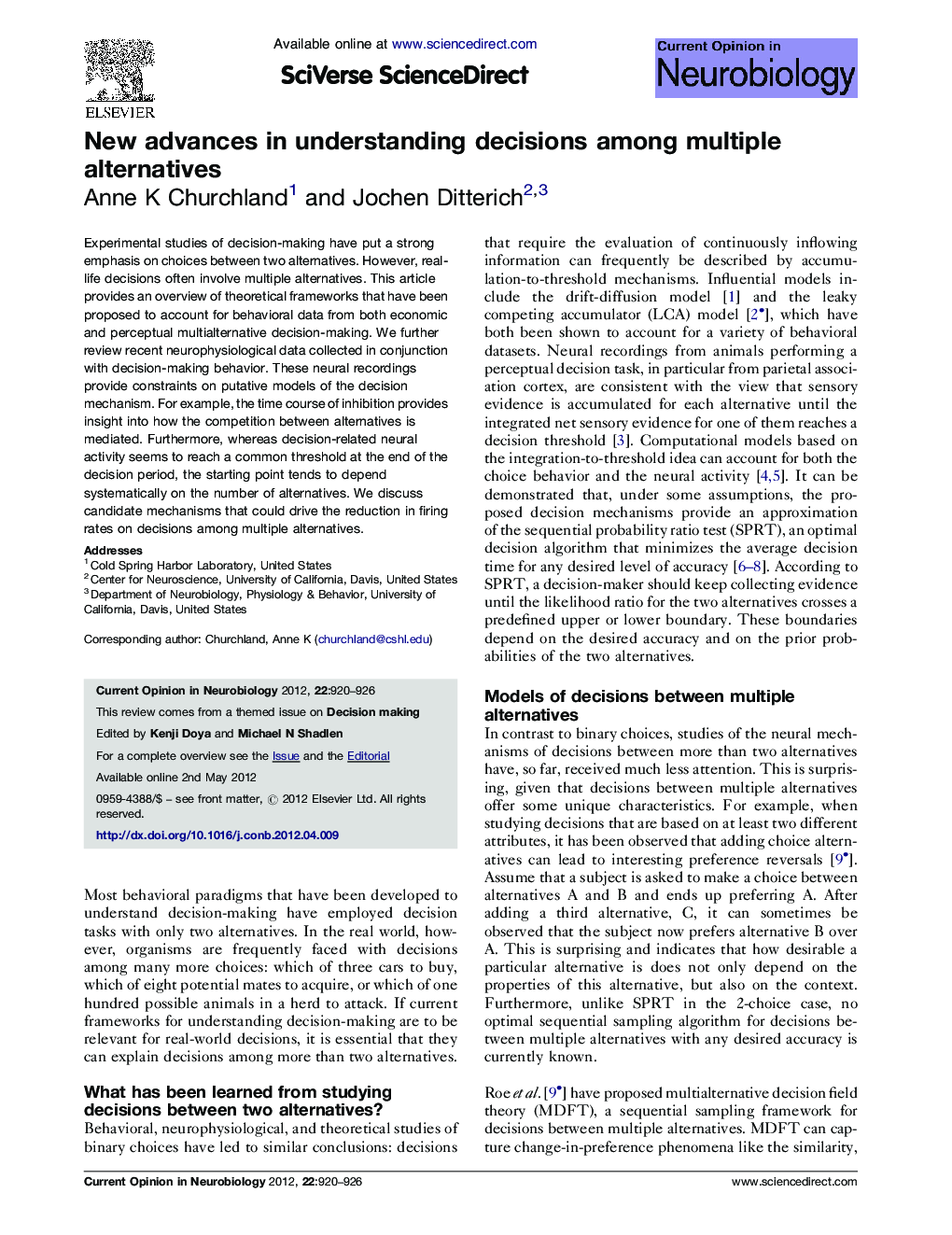| Article ID | Journal | Published Year | Pages | File Type |
|---|---|---|---|---|
| 6267249 | Current Opinion in Neurobiology | 2012 | 7 Pages |
Experimental studies of decision-making have put a strong emphasis on choices between two alternatives. However, real-life decisions often involve multiple alternatives. This article provides an overview of theoretical frameworks that have been proposed to account for behavioral data from both economic and perceptual multialternative decision-making. We further review recent neurophysiological data collected in conjunction with decision-making behavior. These neural recordings provide constraints on putative models of the decision mechanism. For example, the time course of inhibition provides insight into how the competition between alternatives is mediated. Furthermore, whereas decision-related neural activity seems to reach a common threshold at the end of the decision period, the starting point tends to depend systematically on the number of alternatives. We discuss candidate mechanisms that could drive the reduction in firing rates on decisions among multiple alternatives.
⺠Decisions among more than two alternatives can be explained by accumulation to bound frameworks. ⺠These frameworks can be linked to statistical considerations on optimal decision-making. ⺠Lower firing rates are often observed as the number of choice alternatives increases. ⺠The lower firing rates, in some cases, are consistent with divisive normalization.
